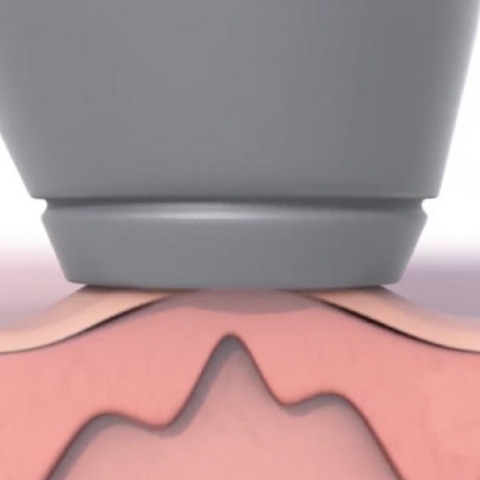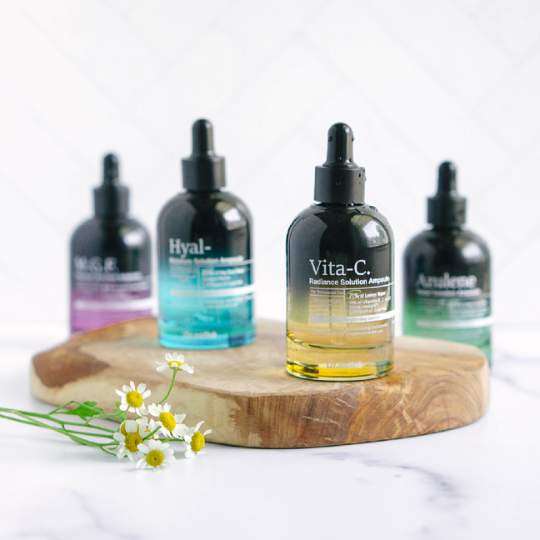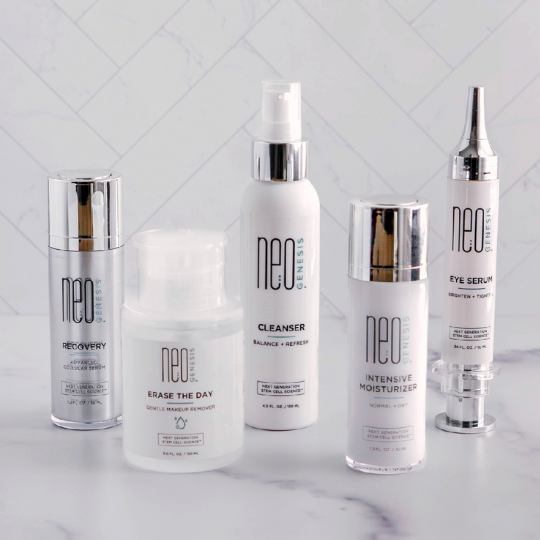Key Takeways
- Microdermabrasion is better than dermaplaning for comprehensive exfoliation and anti-aging benefits
- The MBK Microdermabrasion tool allows for safe and effective at-home microdermabrasion without risk of cuts or ingrown hairs
I strongly believe that few skincare steps are as important as exfoliation, which removes dead skin cells and impurities from the skin’s surface. That’s because the more your skin ages, the less the cells turn over by themselves. In fact, by the time you’re in your 40s, it can take nearly triple the time for new skin cells to form and old ones to shed—but dermaplaning and microdermabrasion can help!
Dermaplaning and microdermabrasion are two non-chemical, non-invasive procedures to exfoliate the face and enable skin cells to turn over, revealing a brighter and more even complexion. But with both procedures performing a similar job, you might be confused about which reigns supreme: dermaplaning vs. microdermabrasion treatments.
I've included everything you need to know below!
What Is Dermaplaning?
From Ancient Egypt to modern Japan, traces of dermaplaning are everywhere in  skincare; however, it wasn’t until the 1970s that dermaplaning was acknowledged as a dermatological treatment for skin issues. Dermaplaning is a type of exfoliation treatment that involves gently scraping the top layer of skin (stratum corneum) with a medical-grade scalpel or a high-quality home-use blade.
skincare; however, it wasn’t until the 1970s that dermaplaning was acknowledged as a dermatological treatment for skin issues. Dermaplaning is a type of exfoliation treatment that involves gently scraping the top layer of skin (stratum corneum) with a medical-grade scalpel or a high-quality home-use blade.
The skin is held taut while the scalpel glides across the face at a 45-degree angle, removing dead skin cells and fine vellus hair (peach fuzz) and leaving the skin surface extra smooth. By sweeping away dirt, debris, and dull dead skin, dermaplaning stimulates the development of new skin cells. The result? More even skin tone and texture and an improvement in fine lines!
What Is Microdermabrasion?
 As the younger sibling of dermaplaning, microdermabrasion made waves in the mid-1990s when the U.S. Food and Drug Administration (FDA) approved the first microdermabrasion tool. Microdermabrasion treatments gently exfoliate the skin’s surface to remove the stratum corneum, then use suction to whisk away the resulting dead skin cells, oil, dirt, and debris.
As the younger sibling of dermaplaning, microdermabrasion made waves in the mid-1990s when the U.S. Food and Drug Administration (FDA) approved the first microdermabrasion tool. Microdermabrasion treatments gently exfoliate the skin’s surface to remove the stratum corneum, then use suction to whisk away the resulting dead skin cells, oil, dirt, and debris.
Considered a type of skin rejuvenation treatment, the vacuum lift suction of microdermabrasion tools serves double duty. They not only increase blood flow and bring oxygen to the surface of the skin, but they also stimulate natural collagen production to make the skin appear more taut and smooth. I often use microdermabrasion to treat light scarring, hyperpigmentation, and dull skin.
What Are the Differences Between Dermaplaning vs. Microdermabrasion?
The primary difference between dermaplaning and microdermabrasion is the type of device used to remove the top layer of skin. A dermaplaning tool is a blade or scalpel, while a microdermabrasion tool is an electric device with an exfoliating diamond tip and suction function. The differences between dermaplaning vs. microdermabrasion devices have varying effects on the skin’s surface.
For instance, I find that a major con of dermaplaning is that the fine vellus hair removed during treatment will grow back over time, creating a feeling of stubble that everyone may not enjoy. Because the hair was cut straight across, it may appear more coarse even though it does not grow in thicker. On the other hand, the most common side effect of microdermabrasion is mild redness or tenderness.
Likewise, while dermaplaning will prompt cellular turnover, it does not address hyperpigmentation or signs of photoaging. Dermaplaning only removes the top layer of skin for a brighter, more even complexion, which is ideal for those with dull or dry skin. Part of the reason I love microdermabrasion is that it exfoliates like dermaplaning but also suctions debris from the skin, cleansing the pores and boosting blood flow.
So, Which Exfoliation Technique Is Best?
Between dermaplaning vs. microdermabrasion, which do I recommend? Microdermabrasion! If your only concern is dry skin, then dermaplaning might work for you—but that’s usually not the case! Confounding factors like hyperpigmentation and clogged pores can also impact skin vibrancy, and I’ve found microdermabrasion to be the best exfoliating treatment for all of the above.
Microdermabrasion promotes natural collagen production, meaning regular  treatments help remove dead skin cells, stimulate cell turnover, and tighten fine lines and wrinkles over time. Plus, my favorite microdermabrasion tools have less user risk. They aren't like dermaplaning at home, which can cause painful ingrown hairs, constant facial stubble, and pesky cuts or nicks across the face’s surface.
treatments help remove dead skin cells, stimulate cell turnover, and tighten fine lines and wrinkles over time. Plus, my favorite microdermabrasion tools have less user risk. They aren't like dermaplaning at home, which can cause painful ingrown hairs, constant facial stubble, and pesky cuts or nicks across the face’s surface.
In particular, I recommend the MBK Microdermabrasion device, which comes with a normal (150 grit) tip for dry skin and a sensitive (180 grit) tip for acne-prone skin. The suction also sweeps away dead skin, so you don’t need to manually remove it. The MBK Microdermabrasion tool is wider than those I’ve used professionally, making it ideal for at-home use without the threat of ingrown hairs or cuts!
FAQ's - Choosing the Right Skincare Path
1. Why is microdermabrasion considered better than dermaplaning for comprehensive exfoliation and anti-aging benefits?
- Microdermabrasion not only removes dead skin cells but also addresses specific concerns like hyperpigmentation and clogged pores, making it a more versatile and comprehensive solution. Additionally, the suction function in microdermabrasion tools promotes collagen production for improved skin texture and firmness over time.
2. How does the MBK Microdermabrasion tool ensure safe at-home use without the risk of cuts or ingrown hairs?
- The MBK Microdermabrasion device is designed for safe and effective at-home use. Its wider design minimizes the risk of ingrown hairs, and the normal and sensitive tips cater to different skin needs. The suction function eliminates the need for manual removal of dead skin, ensuring a user-friendly experience with reduced chances of adverse effects.
3. Can microdermabrasion address specific skin concerns like hyperpigmentation and signs of photoaging?
- Dermaplaning primarily focuses on achieving a brighter complexion by removing the top layer of skin, making it ideal for dull or dry skin. However, it does not effectively address hyperpigmentation or signs of photoaging. In contrast, microdermabrasion targets a wider range of concerns, including hyperpigmentation, light scarring, and dull skin, making it a more versatile option for overall skin renewal.
Understanding the nuances between dermaplaning and microdermabrasion will help you make an informed decision based on your unique skincare needs.
Find Microdermabrasion Tools, Techniques, and Tips in the Club!
 In the battle over dermaplaning vs. microdermabrasion, I’d say that microdermabrasion is a safer exfoliation treatment with additional skin-brightening benefits that you can achieve from home. Fortunately, ‘from home’ doesn’t need to mean ‘alone’—not with a subscription to the Christine Byer Beauty Club (CBBC), the home of ongoing skincare education and community support!
In the battle over dermaplaning vs. microdermabrasion, I’d say that microdermabrasion is a safer exfoliation treatment with additional skin-brightening benefits that you can achieve from home. Fortunately, ‘from home’ doesn’t need to mean ‘alone’—not with a subscription to the Christine Byer Beauty Club (CBBC), the home of ongoing skincare education and community support!
As a licensed master esthetician for over two decades, the Christine Byer Beauty Club is my corner of the internet to provide searchable professional advice, how-to instructions, and even LIVE question-and-answer sessions for women just like you. You’ll get the biggest discounts and deals on my products, including microdermabrasion tools. Join the CBBC today to get started!












